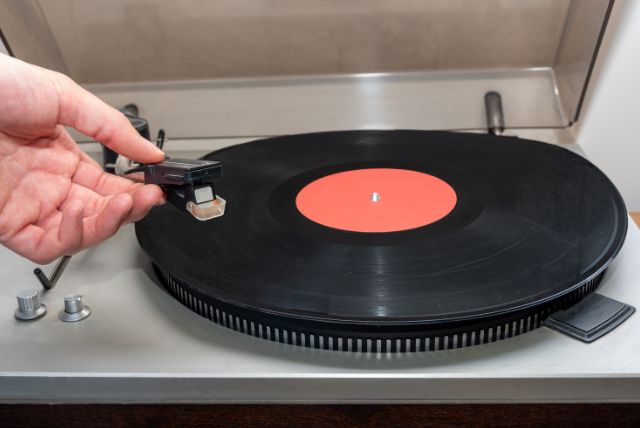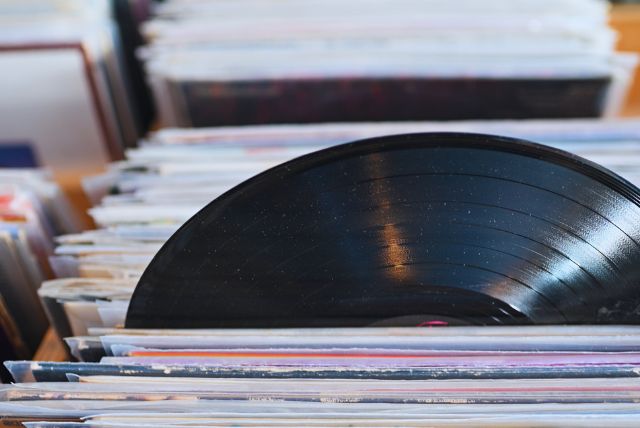One day, my friend brought me his warped vinyl record and asked me how he could fix it. It was Abby Road by the Beatles, and if you are a fan of the Beatles like me, you would know how precious that album is.
As the bend was not that much, I told him to keep the record between the two books and leave it for a few weeks. After two weeks, I got a call from him to tell me the good news about the record. It was fixed.
Though not all records are perfectly flat when they are produced, and a slightly warp record won’t cause any problem while playback, a record that is extensively bent can cause the tonearm and stylus to jump between the vinyl grooves that ultimately cause the skip.
There are different ways to fix a warped LP, such as extensive pressure, heating method and record flattening machine, that we are going to discuss ahead in the blog. So, stay tuned!
Why do vinyl records warp?
There are multiple factors that cause a vinyl record to bent or warp, such as excess pressure, extreme heat or improper storage.
The records can bend under extreme pressure if not stored properly. That’s why it is extremely important to store your records vertically to protect them from warping.
Extreme heat combined with unfavorable storage conditions (garage or car trunk) is another factor that can lead to warping of records. Any temperature above 140 degrees Fahrenheit can damage your records and affect its shape.
How to tell if a vinyl is warped?
There are different ways to check if a record has a warp or not. Let’s have a look at them.
Visual check
Place the record flat on a surface like a table or a countertop and look for any bend or curve from the eye level. A warped record will show signs of bending in a way that it doesn’t lay entirely flat on the surface.
Distortion or skip in sound
Another thing that you can do is to listen to your vinyl record carefully. A warped record will cause the needle to jump between the groves, which results in skip and distortion in audio.
If you notice any skips in music or any abnormality while playback, it could be due to warping.
Fun Fact: Black vinyl records are more durable than colored and transparent vinyl records.
Spin the record and inspect

Usually, a vinyl record that is in perfect shape spins smoothly. You can check your record by placing it on the turntable and spinning it. If you notice any wobble or the record moves up and down, that means it’s likely warped.
How to fix a warped vinyl?
When you detect a curve or bend in your record, here are some of the methods through which you can fix it. Keep in mind that some methods are more effective than others depending upon factors such as the severity of warp.
Fix with pressure
Fixing a record by exerting pressure is though time consuming but by far the easiest and straightforward thing to do. You need an object such as a book, box or something that can evenly distribute pressure on the record surface.
Before trying this fix, make sure you clean your record for any dust or debris, as they can get deeper into grooves due to pressure.
Once the vinyl record is cleaned, place the record beneath the object and leave it for a few weeks or even months. The time frame totally depends on how severely the record is warped.
Try this before moving on to the more advanced methods.
Fix with heat
Fixing the record with heat may sound extreme, but it’s one of the best ways to fix a warped record that is popular among audiophiles.
The process involves placing the vinyl record inside two glass sheets and heating it. I know it sounds easy till now, but the real problem is to find the glass panes that are just big enough to cover the entire record but small enough to get inside the microwave.
Once you have found the two glass planes, it’s time to get your record straightened up.
- First, preheat your oven to the minimum temperature. Most ovens have a minimum temperature of 100-225 degrees Fahrenheit.
- Now place the record between the two glass sheets and put it inside the oven.
- Leave the record for 30 minutes.
- After 30 minutes, remove the record and leave it to cool down for some time.
- Then check if the warp is fixed; if not, repeat the process and start by slightly increasing the temperature.
Here is a more detailed video to make it easy for you:
Stay extra cautious while heating vinyl records at high temperatures and leaving them for longer durations, as excess heat can damage the vinyl grooves that are beyond repairable.
Fix with record flattener machine
If you have a warped collection or cash to spare, you can buy a record flattener machine. The record flattener contains two heavy rings, two protective discs and, in some cases, a warmer.
Using it is easy; you need to place the vinyl record between the two protective discs, place it under the two rings, and let time do the fix. It is similar to the first method, where we used books or heavy objects, and can take similar time, weeks and even months.
Some record flattener also has warmers that heat the vinyl record for better repair. However, it can damage the records if used for a longer period of time.
Ways to prevent your records from warping
To protect your other records from unnecessary warping in the future, here are some protective measures that you can implement to keep them in perfect shape for years to come.
Store records vertically

Always make sure the records are stored vertically, standing upright rather than stacked on one another for longer periods of time, as this can ultimately lead to warping. The best practice is to keep your records vertically on shelves or in a vintage record crate to keep them intact.
For more information, read the article on how to store vinyl records.
Avoid excess heat or sunlight
Store your records away from sunlight or excess heat, as it can damage your records over time and lead them to warping. Try to keep them at a temperature that is cool and away from places like the kitchen or windows.
Store in a controlled temperature
Vinyl records are made up of PVC (Polyvinyl Chloride) that warps at 140 degrees Fahrenheit. Hence, it’s very important to keep your records at a place that is cooler than 140 degrees.
There is hardly any chance that your living room will reach that temperature, but what about the garage, your car trunk or attic? The temperature can fluctuate easily at these places.
Keep this in mind: if the place is comfortable for you, it is going to be good for your records, too.
Just avoid the places where the temperature fluctuates too much and rises above 140 degrees, and your records will be in the best shape for years to come.
Final beat
Vinyl records are extremely fragile discs that can easily be damaged by excess pressure, extreme heat and improper storing and handling. It’s always a good idea to keep them protected from extreme temperatures and unnecessary pressure by following the different ways discussed in the blog.
However, even after taking precautions, chances are somehow your records still get warped. But you don’t need to worry about it as you already know different methods to fix it.
Also, never forget to keep your records clean as it’s equally important. I am leaving a guide for you guys on how to clean your vinyl records efficiently. Do check it. Cheers!
Frequently Asked Questions
Q: Can you still play a slightly warped record?
Yes, it’s completely fine to play a slightly warped record. The problem with a warped record is that the stylus may experience difficulty while tracking the grooves, which causes a skip while playback. But it totally depends on the extent the record is bent; if it is slightly bent, chances are the record will play just fine.
Q: Can a warped record cause skipping?
Yes, a warped record can cause skipping while playing. Due to the bend in the record, it’s difficult for the stylus to track the vinyl grooves efficiently.


